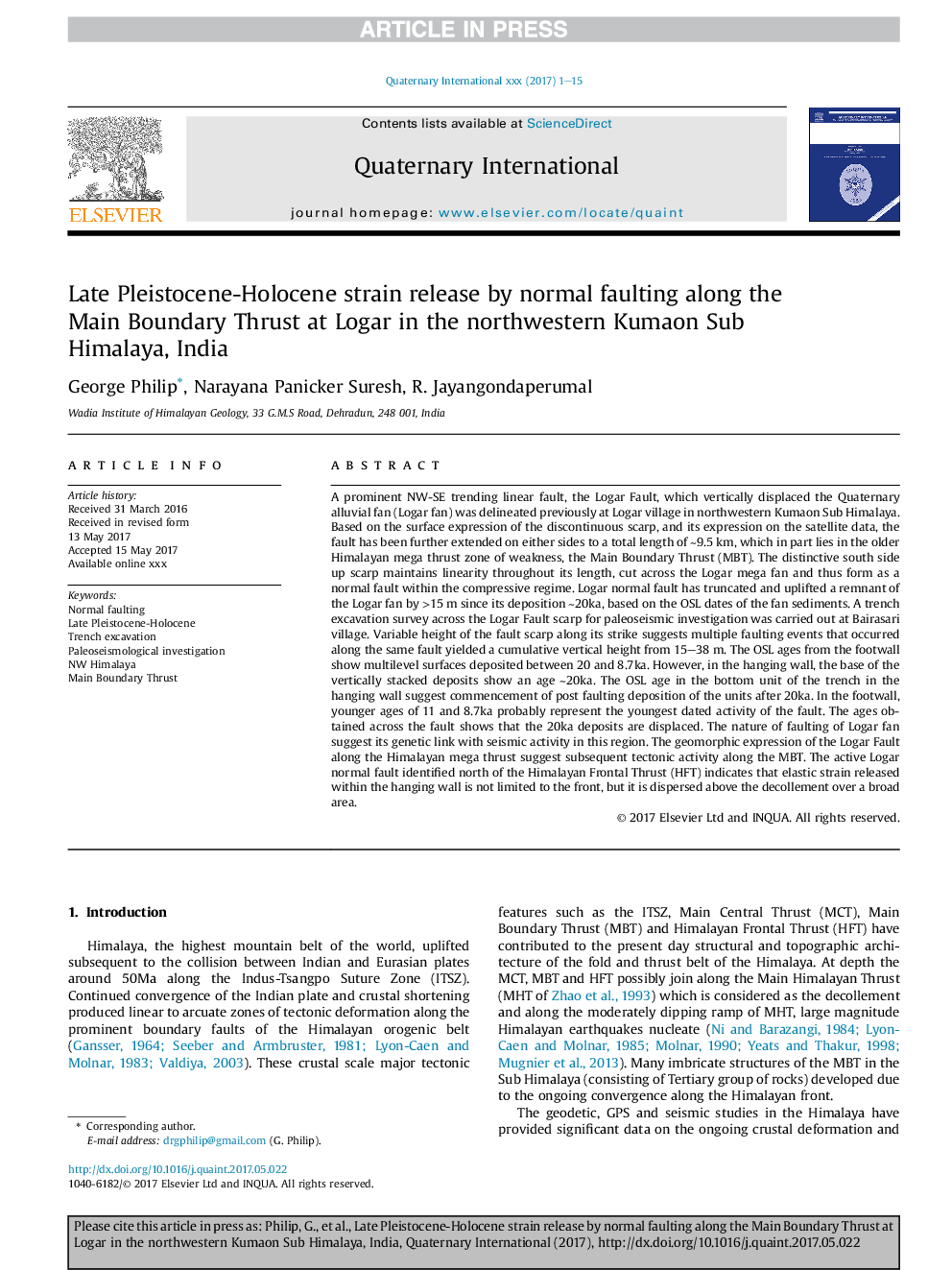| Article ID | Journal | Published Year | Pages | File Type |
|---|---|---|---|---|
| 7451076 | Quaternary International | 2017 | 15 Pages |
Abstract
A prominent NW-SE trending linear fault, the Logar Fault, which vertically displaced the Quaternary alluvial fan (Logar fan) was delineated previously at Logar village in northwestern Kumaon Sub Himalaya. Based on the surface expression of the discontinuous scarp, and its expression on the satellite data, the fault has been further extended on either sides to a total length of â¼9.5Â km, which in part lies in the older Himalayan mega thrust zone of weakness, the Main Boundary Thrust (MBT). The distinctive south side up scarp maintains linearity throughout its length, cut across the Logar mega fan and thus form as a normal fault within the compressive regime. Logar normal fault has truncated and uplifted a remnant of the Logar fan by >15 m since its deposition â¼20ka, based on the OSL dates of the fan sediments. A trench excavation survey across the Logar Fault scarp for paleoseismic investigation was carried out at Bairasari village. Variable height of the fault scarp along its strike suggests multiple faulting events that occurred along the same fault yielded a cumulative vertical height from 15-38Â m. The OSL ages from the footwall show multilevel surfaces deposited between 20 and 8.7ka. However, in the hanging wall, the base of the vertically stacked deposits show an age â¼20ka. The OSL age in the bottom unit of the trench in the hanging wall suggest commencement of post faulting deposition of the units after 20ka. In the footwall, younger ages of 11 and 8.7ka probably represent the youngest dated activity of the fault. The ages obtained across the fault shows that the 20ka deposits are displaced. The nature of faulting of Logar fan suggest its genetic link with seismic activity in this region. The geomorphic expression of the Logar Fault along the Himalayan mega thrust suggest subsequent tectonic activity along the MBT. The active Logar normal fault identified north of the Himalayan Frontal Thrust (HFT) indicates that elastic strain released within the hanging wall is not limited to the front, but it is dispersed above the decollement over a broad area.
Related Topics
Physical Sciences and Engineering
Earth and Planetary Sciences
Geology
Authors
George Philip, Narayana Panicker Suresh, R. Jayangondaperumal,
